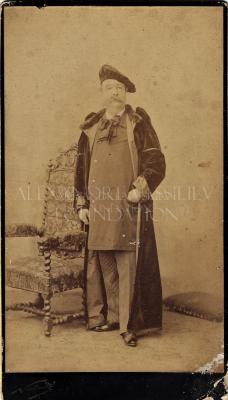
House of Worth (French, 1858-1956, 1999-)
The House of Worth is a French house of high fashion that specializes in haute couture, ready-to-wear clothes, and perfumes. The historic house was founded in 1870 by designer Charles Frederick WORTH (1825 - 1895), a French designer of British origin, considered to be a founder of haute couture, when House of Worth & Bobergh was closed. The house continued to operate under his descendants until 1952 and closed in 1956. The House of Worth brand was revived in 1999.
Worth was born in England on October 13, 1825 into a modest family. As a young man, he was apprenticed and employed by two textile merchants in London. There he acquired an in-depth knowledge of fabrics and the needs of fashion designers. He often visited the National Gallery and other exhibitions, and studied historical portraits there. We will find in his later creations elements inspired by these portraits.
Worth moved to Paris in 1845, where he found work at Gagelin, a major house selling textiles, shawls and ready-to-wear clothing. He became the main seller and eventually opened a sewing division: it was his first job as a professional designer. His models exhibited at the Universal Exhibitions in London in 1851 and Paris in 1855 are awarded prizes which contribute to Gagelin's reputation but also draw attention to Worth himself. He can thus found his own couture house in 1858 at 7 rue de la Paix, with a partner, Otto Bobergh.
His conception of fashion creation is different from that which existed until then: he created the principle of the fashion house. Before Worth, the designer responds to customer orders; the client asks, the designer performs: he is a craftsman. Worth creates new models, according to his inspiration, putting his artistic sense forward: he is an artist. He launched his own collections, models of which were made in advance, and were presented in luxurious salons, in a single copy. The role of the client is limited to the choice of colors and type of fabrics, Worth has autonomy in creation. The collections change regularly, opening the fashion cycle (spring-summer, fall-winter collection).
Worth's success is part of the trajectory of the Second Empire. With Napoleon III, Paris becomes again an imperial capital, whose emperor wants to make a showcase for Europe. The demand for luxury items, including trendy clothes and dresses, reached levels not seen since the Revolution. When Napoleon III married Eugenie de Montijo, the tastes of the new empress set the tone of the court: Worth was in favor and became a designer in great demand in the 1860s. He included in his clients members of Parisian high society and aristocracy, such as Princess Metternich, wife of the Austrian ambassador.
Worth innovates in the marketing and communication process: before him, the designer communicates through fashion magazines or by sending dressed dolls by mail. Worth invents the living mannequin he calls it a "twin", and he uses his own wife Marie Vernet Worth for this. He organizes fashion shows and runways his creations, accepts copies of his dresses from department stores.
Loading...